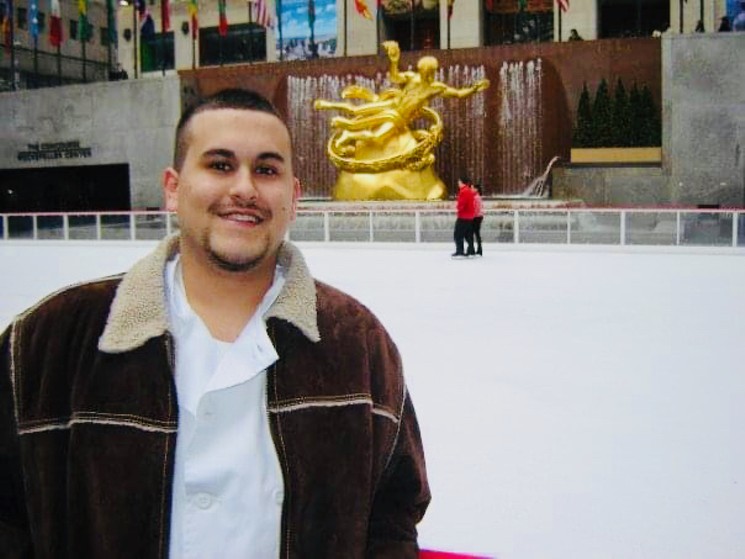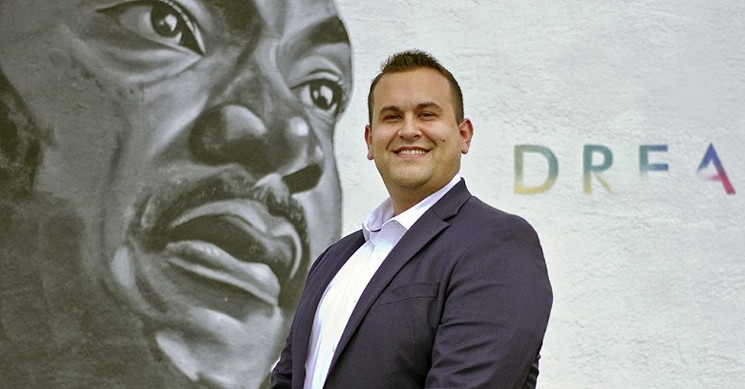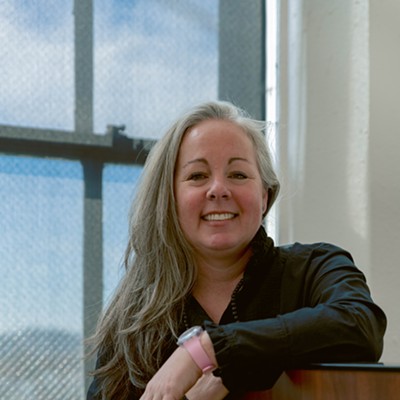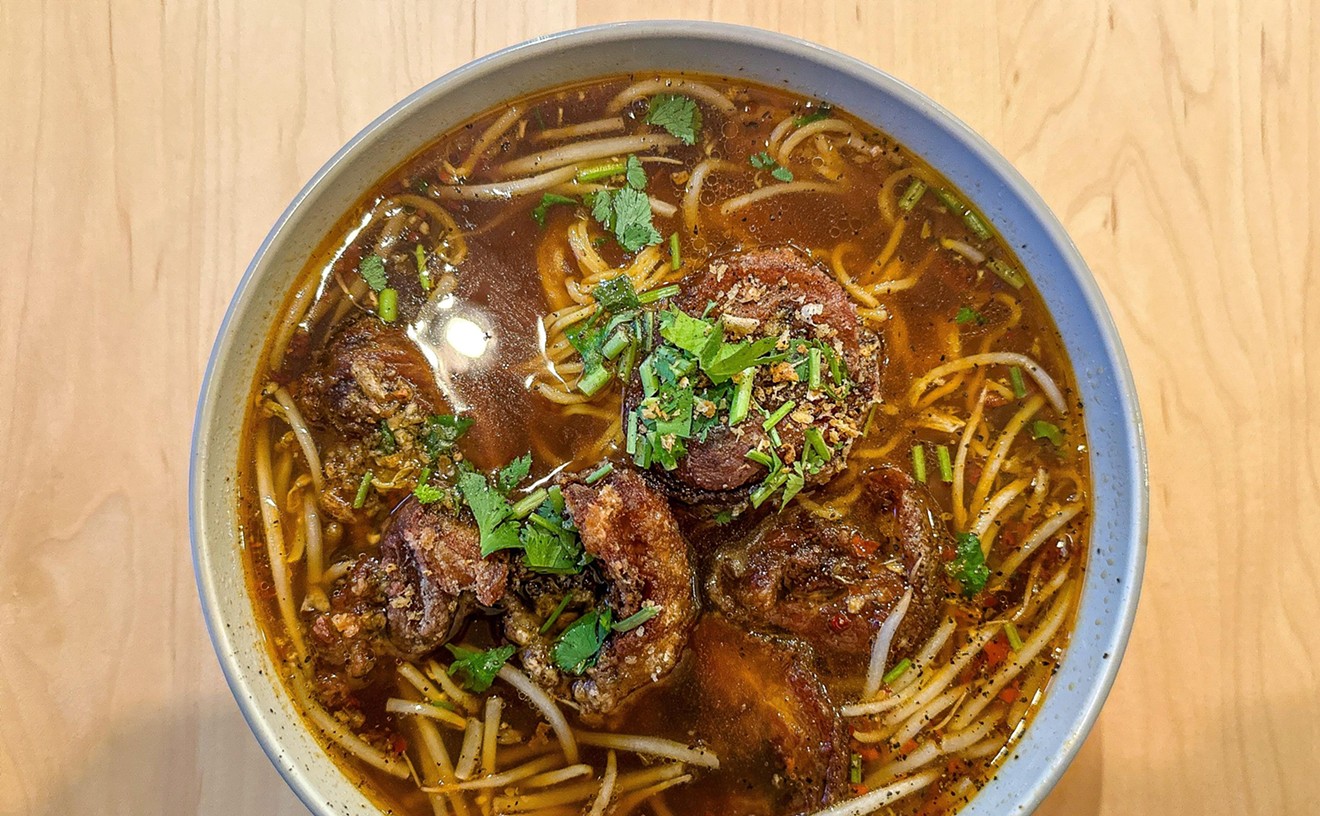For Adam Bazaldua, District 7 Dallas City Council member, it was that very type of provocation that launched his career in a whole new trajectory.
Bazaldua, a native of DeSoto, got his first job at Sonic the week he turned 15. After high school, he attended Le Cordon Bleu of Culinary Arts in Austin and immediately after graduating left for New York City, where he worked as a private chef and in several restaurants, including Thomas Keller’s Bouchon Bakery. He was hired for his first executive chef position at Cafe Select in SoHo when he was just 22.

One of Bazaldua's gig in New York City included working at Bouchon Bakery at Rockefeller Center.
Adam Bazaldua
The transition from chef to educator was tough.
“I like to tell people I went from one of the most politically incorrect industries to the exact opposite,” Bazaldua says. “I had to not only learn a lot in terms of substance but also just an entirely different environment altogether. It was a huge learning experience, but I was blessed with a principal who really helped with that transition at first.”
Acclimating to new work protocols was just the start of his journey. Bazaldua saw up-close the economic disparities across the city.
“There’s an obvious inequity that exists in investment and allocation of resources, which has been longstanding in the district, that was very eye-opening to me," he says. "And it’s very parallel to that of the city as a whole. That’s when I really started to peel back the layers of Dallas.”“There’s so much more than teaching just culinary arts, and that is what sparked the transition into the local political scene." – City Councilman Adam Bazaldua
tweet this
As a chef, he naturally encouraged his students to consider trade schools, such as culinary arts, as viable options alongside the traditional four-year college.
“Acquiring that trade is a ticket to breaking the cycle of poverty for a family,” Bazaldua says.
There's one moment that stands out from all the others, however; it was just after President Donald Trump’s inauguration and the Women’s March in DC.
“We often talked about pop culture and politics in my class as we were prepping and getting ready. And I always had pretty strong opinions, obviously,” says Bazaldua, who was teaching at Wilmer Hutchins High School in southern Dallas at the time.
“A student said, ‘Chef, why don’t you run for office?’ And I said, ‘I don’t even have a bachelor’s degree. I didn’t take the traditional route of a politician, so I don’t think anyone would vote for me.’ And his response was, ‘Neither did our president.’”
And a hush fell over the room.
“That’s something I’ll never forget,” says Bazaldua with a light laugh. “It was an ah-ha moment.”
He took his student’s challenge to heart, leveraged what he learned about the city from his time teaching and ran for Dallas City Council in 2017, where he ended up in fourth place. He ran again in 2019 and won by 91 votes.
“There’s so much more than teaching just culinary arts, and that is what sparked the transition into the local political scene," Bazaldua says.
The Bouchon Quiche
Bazaldua was kind enough to share his wife's favorite holiday dish, which he learned after working at Bouchon. Nailing down the specifics is a bit difficult, however. He hands out recipes like stories; there’s no quaint bullet-pointed list to email over, instead just says, “Want me to just tell it to you now?”
As a side note, the author of this article is naming this quiche “Brittany Hates it When I Give Her Recipes Because It’s Never About Time." Because Brittany is right.
Nonetheless, the following is Bazaldua's recipe for a must-have holiday quiche, a la Buchon Bakery:
“The crust is super basic; two cups of AP [flour], a teaspoon of salt, two sticks of butter and about a quarter cup of frozen vodka and two tablespoons of canola oil. If you use vodka in lieu of water in your crust, during the baking process the alcohol evaporates, and in that process, it allows for there to be natural pockets of air to build up inside of the crust to make it more flakey, especially when you’re going to put in a heavy filling that may somewhat saturate the crust.
“What I would suggest is a springform pan or anything that is capable of being bottomless. A nine-inch round. There shouldn’t be any angle in the pan, it needs to go straight down. The custard is going to be the star of the show. When this crust is laid in, there needs to be enough so that it can be laid over.
How long do we cook that?
“As far as time, in terms of the different kinds of ovens out there, I hate to just give a time to bake it. We par [partially bake] the crust with rice and parchment paper. I would suggest 375 degrees in a convection oven, turn it in after about 10 minutes and it will probably take 25 to 30 minutes. But, watch it closely. Then, after baking it and before adding the custard it has to completely cool.
“The custard is equal parts whole milk to heavy cream; so two cups and two cups, for a quart total, and a half dozen eggs. Mix these vigorously. Then I like to do fresh nutmeg with a microplane, probably about four or five gentle strokes. Then, salt … at Bouchon we always used white pepper. Chef Keller would probably be really mad that I’m saying this, but I hate white pepper. I don’t really care if you see specks of pepper inside of my custard. I prefer for pepper to have flavor and not taste like dirt, so I suggest black pepper. Balance that however you would normally season.
“At that point, you should just incorporate whatever kind of quiche you prefer. Mine is Lorraine, so I do nice thick lardons of slab bacon that is rendered really slowly, and not to the crisp point. Then I pat that down to get the excess oil off of it. And I use that oil to sweat out very slow and low some onions until they’re translucent. I’ll mix that with the lardons [bacon] and line the bottom of the pastry before I pour in the custard.”
What about cheese?
“We add freshly grated Gruyere. I suggest putting a little bit inside, but saving some for the top because it does make for some beautiful browning on the top.
Maybe 8 ounces?
"Sure!"
How long should the entire quiche bake after the custard is poured into the pastry?
“Brittany hates it when I give her recipes because it’s never about time. I would do maybe 15 minutes at most, but I would also rotate it before that 15-minute mark and it may take longer, it just really depends. I hate to say that. You need to watch it. But honestly, I go by smell. That is one of the fun things I loved teaching my students: The job of a chef is one of the only jobs in the world where you get to use all five of your senses every day.”













